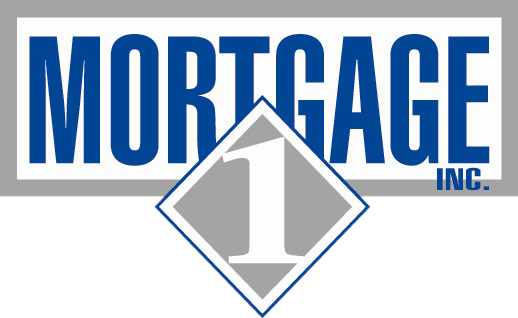
Got a Rent Increase Notice? Here’s Why It Might Be Time to Buy
April 16, 2025Each year, signing another lease renewal can feel like being stuck in a loop—paying rent for a place that will never be yours. While renting offers flexibility, it often comes at the cost of building long-term wealth and having full control of your living space.
As 2025 unfolds, it’s a great time to break free from the rent cycle. Transitioning to ownership can provide greater stability, personal freedom, and a pathway to building your equity. Let’s take a look at how to get started.
| Ready to Ditch Renting? Start today by getting pre-approved. It’s quick and hassle free. Give us a call at 1-866-532-0550 to learn more or get preapproved today with our easy-to-use digital preapproval app. With Pro SNAP, getting approved is secure, convenient, and takes as little as 15 minutes. |
1. Set Your Homeownership Goals and Avoid a Lease Renewal
Avoiding signing another lease renewal begins with a clear plan and an honest assessment of your financial situation. Understanding your readiness to buy is crucial to avoid the uncertainty that often keeps renters stuck.
Define Your Goals
While owning offers a sense of permanence and a more customizable environment, it is also important to reflect on what this move means for you specifically. Is it creating a forever home, investing in your future, or gaining control over your living environment and location?
Clarifying your motivations will guide your home search. These initial goals will also help when it comes time to choose a specific neighborhood, determine the number of bedrooms, or ensure room for future growth. Identifying these priorities will help you make informed decisions aligned with your long-term vision.
Assess Your Financial Readiness
Take a confident look at your financial health to affirm your readiness to buy. Whether you’re ready to dive in or need to fine-tune a few areas, this assessment is a crucial step toward leaving the rent cycle behind. Evaluating these factors will set you on the path to becoming a homeowner:
- Credit Score: Aim for a score of 620 or higher to qualify for most conventional mortgages. If your score is below this threshold, consider improving it by paying bills on time, reducing outstanding debts, and checking your credit report for errors.
- Savings: Ensure you have funds for a down payment (typically 3–20% of the home’s price), closing costs (about 2–6%), and an emergency fund for unexpected expenses.
- Debt-to-Income Ratio (DTI): Lenders prefer a DTI below 36%. Calculate this by dividing your total monthly debt payments by your gross monthly income.
- Budget: Determine a comfortable monthly housing payment, including mortgage, taxes, insurance, and maintenance.
2. Assess Your Financial Readiness to Leave Renting Behind
Having covered the basics and assessed your financial readiness, you’re now prepared to take the next steps toward homeownership. These upcoming actions will provide you with a clearer picture of what this change entails, helping you move confidently away from the cycle of lease renewals.
Explore Mortgage Options and Get Pre-Approved
Securing a mortgage is a critical step in the homebuying process. Unlike lease renewal agreements, loan options vary greatly. Common mortgage types include:
- Conventional Loans: Offer flexible terms and competitive interest rates, ideal for borrowers with good credit and a stable income.
- FHA Loans: Designed for first-time and low-to-moderate-income buyers, featuring lower down payment requirements and more lenient credit criteria.
- VA Loans: Provide eligible veterans and active-duty service members with benefits like no down payment, no private mortgage insurance, and favorable interest rates.
- USDA Loans: Assist buyers in rural areas by offering 100% financing with no down payment and competitive interest rates.
A great start is getting pre-approved. Obtaining a mortgage pre-approval not only clarifies your budget, helping you focus on homes within your financial reach, but also demonstrates to sellers that you’re a serious and qualified buyer. This gives you a competitive edge in the process.
Finalize Your Budget and Prioritize Location
With your mortgage pre-approval in hand, you now have a clear understanding of your purchasing power. The next step is to choose your ideal location and further think about what you want in your home. Remember those goals from earlier? Now is the time to dive even deeper since you have a better idea of what you can afford.
When selecting a location, think about:
- Commute: Proximity to work or school.
- Community: Neighborhood safety, schools, and amenities.
- Future Growth: Areas with potential for property value appreciation.
Once you’ve identified your ideal location, it’s time to consider the features that will make a house feel like home. Reflect on the aspects that align with your lifestyle and preferences:
- Property size: Do you envision a spacious yard for outdoor activities, or would a low-maintenance outdoor area better suit your needs?
- Square footage: How many bedrooms and bathrooms do you want?
- Other Amenities: Consider what your must-haves are, maybe it’s kitchen features, walk-in closets, or a pool for the summertime.
3. Find Your Home and Ditch the Lease Renewal
With your financial groundwork laid out, location picked, and your house wishlist made, it’s time to embark on the buying journey. This phase involves strategic planning and decisive action to transition from renting to owning.
Begin House Hunting with a Trusted Realtor
Partnering with an experienced real estate agent can streamline your home search. A knowledgeable agent provides access to listings, offers insights into neighborhoods, and guides you through negotiations and paperwork. Their expertise ensures you make informed decisions and avoid potential pitfalls.
When touring homes, consider factors such as your amenities/wishlist items, condition, and potential for appreciation. Your agent can help you evaluate properties objectively, ensuring they align with your goals and budget.
Close the Deal and Build Your Future
Once you’ve found the right home, your agent will assist in crafting a competitive offer. After the seller accepts, you’ll enter the closing process, which includes:
- Home Inspection: Assess the property’s condition and identify any necessary repairs.
- Appraisal: Confirm the home’s value aligns with the agreed-upon price.
- Final Walk-Through: Ensure the property is in the expected condition before closing.
During closing, you’ll sign the necessary documents, pay closing costs, and receive the keys to your new home.
Ready to Break the Lease Renewal Cycle?
Each lease renewal is a reminder of money spent without homeownership. By choosing not to sign that lease renewal, you invest in your future, gain stability, and create a space that’s truly yours.
At Mortgage 1, we’re here to guide you through every step of the homebuying process. From assessing your financial readiness to closing on your first home, our team is committed to helping you make informed decisions. Contact us today to break the cycle and take the leap towards owning, or get pre-approved to get started.





